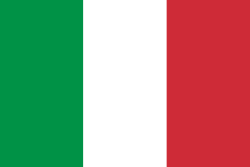The honey market is today flooded with counterfeit products. A fraud with multiple consequences, which puts the health of consumers, the economic viability of beekeepers, and the preservation of biodiversity at risk. Overview of a disturbing phenomenon and ways to remedy it.
A food scandal that is gaining momentum in Europe
Natural product par excellence, honey should not undergo any transformation or addition. Yet, for several years, the falsification of this precious nectar is becoming widespread. The situation is becoming critical in Europe, where demand far exceeds local production.
In France, the annual honey consumption is approximately four times the national production. This imbalance opens the way to fraudulent practices: certain actors do not hesitate to resort to adulteration procedures to artificially inflate available... to the detriment of quality.
What is adulterated honey, and how to recognize it?
Adulterated honey is a product modified after harvesting by the addition of industrial syrups based on sugar cane, corn, rice, wheat or beet. These practices are sophisticated and difficult to detect, even for laboratories.
Here are some revealing indicators of counterfeit honey:
· Abnormal pollen content or lack of characteristic pollen
· Incoherent isotopic composition
· Presence of exogenous sugars
· Abnormally low sale price
A recent study by the European Commission has revealed that 14% of honeys analyzed showed signs of fraud. An alarming figure.
Europe overwhelmed by dubious imports
Due to insufficient production, the European Union largely depends on imports — notably from China, Ukraine, and Spain. These foreign honeys, occasionally sold at prices defying all competition, are often pointed at in falsification scandals.
Some analyzed lots present :
· A low pollen content
· Sweet syrup residues
· A geographically vague or disguised origin
· Prices below the profitability threshold of authentic honey
Result: unfair competition that weakens the entire European sector. Beekeepers, committed to a production that is thorough and environmentally friendly, struggle to cope economically.
Severe consequences for beekeepers and the environment
This massive fraud has far-reaching consequences:
· Drop in profitability of honest operations
· Reduction in the number of beehives and cessation of activity among many beekeepers
· Degradation of biodiversity: bees are key pollinators
· Loss of consumer confidence in the product and the industry
The financial precariousness of beekeepers puts their capacity to maintain the beehives at risk, which directly threatens the balance of ecosystems.
Solutions for preserving the authenticity of honey
The fight against honey fraud requires a collective mobilization. Several levers are to be activated:
· Strengthening controls: advanced isotopic analyses, pollen identification
· Stricter Regulation: clear standards, harmonized internationally, and severe penalties
· Valuation of local productions: quality labels, traceability, promotion of short circuits
· Consumer education: better understanding price differences and recognizing authentic honey
· Support for beekeepers: assistance with installation, modernization of tools, and certification
A battle for the future of biodiversity
Honey fraud doesn't only concern beekeepers: it threatens the entire living chain. By altering a product so symbolic, it undermines sustainable farming, puts pollinators in danger, and harms consumer confidence. Choosing authentic honey is making a move for local economy, biodiversity, and tomorrow's food security.
Responsible initiatives are emerging to counter this scourge. In Madagascar, Ilanga Nature valorises the work of beekeepers by creating pure, unmodified honey, harvested by hand and subjected to rigorous analysis. A concrete commitment to preserving the wealth of ecosystems and ensuring honey that is true to nature and respectful of those who consume it.



